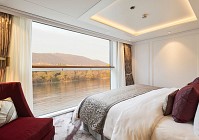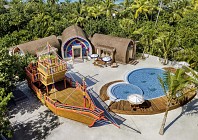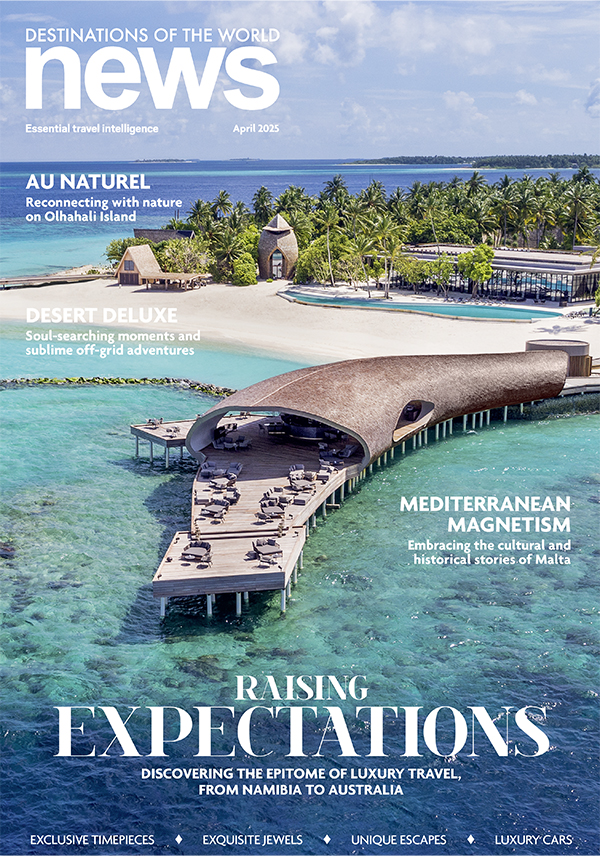Home to Gothic architecture, seven spires, 90 different winding alleys and courtyards, and an Old Town that’s been listed as a UNESCO World Heritage Site since 1987, the German city of Lübeck is undeniably impressive. It’s also the starting point of my first visit to Germany, bringing me seven hours across the skies from Dubai to attend the ‘Incoming and Brand Summit 2023’ held in the city. One of the key focal points of this summer’s summit was to showcase Germany as a destination that is ‘simply inspiring in the context of sustainability’, piquing my interest as someone who loves to travel but wants do better by the world whilst doing so.

Trends in the travel industry naturally ebb and flow, but ecotourism and responsible travel are, hopefully, here to stay, fuelled by a growing group of people with a mindset that protects the planet. Germany is certainly a key player when it comes to sustainable travel, ranking in the top 10 among all European countries on the YouGov Travel Tourism & Sustainability Ranking 2022. What this means, is that the country as a whole is building a sustainable tourism industry that prioritises the planet, such as encouraging longer stays, slower travel and spotlighting authentic experiences that celebrate Germany’s culture.

Truth be told, my German story actually starts in Hamburg, where a long, leisurely train ride takes me to Lübeck as a way to both eschew further air-miles and kick-start a trip centred around slow-travel. Once in Lübeck, it’s all about the walking, with cobbled streets taking you from the late-Gothic Holsten Gate and the St. Annen Museum to labyrinthine alleyways and the island-shaped Old Town.

When your feet need a break, set your own tempo and see the city from a kayak, stand-up paddle board, or hire an electric boat to meander down the Trave River for an exceedingly leisurely afternoon pursuit. The city is also home to five Gothic churches, 11 museums and three houses dedicated to Lübeck’s Nobel Prize Laureates: Thomas Mann, Gunter Grass and Willy Brandt. And no visit to Lübeck is complete without trying some marzipan, the city’s sweetest ambassador. The next stop on our slow-travel tour puts us on the famous German Fairy Tale Route, a special travel itinerary for a long, climate-friendly holiday centred around the country’s rich storytelling. The route is 600 kilometres long, running from Hanau in central Germany to Bremen in the north.

We jump in mid-way in Hamelin, a city set amid the Weser Upland hills, and fabled for both its beauty and the Pied Piper. The city lives and breathes the dark tale of a piper who, in 1284, promised to rid Hamelin of its rat infestation, only to return, when he was cheated of his fee, to exact revenge by luring away the town’s children – who were never to be seen again. While it’s a sombre story, the town has a love/hate relationship with rats and you’ll find the long-tailed rodent imprinted on pretty much every inch of Hamelin. Book a ‘live and immersive’ Pied Piper City Tour to be whisked around the town’s rat route, cobbled streets, Renaissance buildings and beautiful churches either by foot or on an E-Scooter, as the rat-catching story is re-enacted by tour guide Michael Boyer, dressed as the colourful-yet-cunning character.

En route to Kassel, the capital of the German Fairy Tale Route, we make a quick stop at Schloss Hämelschenburg, a three-winged 16th-century castle known for its sustainability practices. Owned by Baron Henry von Klenke, the moated castle has been in the family for 20 generations, and is now a renowned centre of history, art, agriculture and gastronomy. Kassel itself is a place filled with both stories and works of art, with numerous other claims to fame. It’s home to Documenta, the world’s leading contemporary art exhibition, and the 240-acre UNESCO World Heritage Park of Bergpark Wilhelmshöhe, and it was also the long-time residence of the Brothers Grimm: Jacob and Wilhelm.

The exhibition at Grimmwelt (or Grimm World Museum) puts the Brothers Grimm in a new light. Known the world over for their Grimms’ Fairy Tales, it was actually their skills as linguists – as opposed to writers – and their findings as students of the roots of the German language that their published work is centred around. In fact, the brothers didn’t officially ‘write’ any of the Grimms Fairy Tales, rather they collected and adapted others’ stories in order to preserve the writings. The museum is the largest space in the world celebrating the literary works of Jacob and Wilhelm, and, in a series of interactive exhibitions, allows guests to discover their published findings, read letters and archival hand-written notes on the German language, and see personal household effects. It’s as interactive as it is engaging, with a Hansel and Gretel ‘house’ made of sweets allowing for happy childhood re-immersion.



The last stop on our slow-travel tour around central and Northern Germany is Bergpark Wilhelmshöhe, a UNESCO World Heritage site (and one of Europe’s largest parks on a hillside) that covers 560 hectares, taking visitors (on foot if they desire), from Kassel’s famous Hercules monument at the top, past the 350 metres of cascading water ways down to Wilhelmshöhe Palace. Take a deep breath and climb the 186 steps leading to the top of the 70-metre-tall Hercules statue, as the views are worth the exertion. Then, back down the bottom, marvel at the water feature that, once a month, sends 750,000 litres of water rushing down a 12-kilometre run of cascades, filling ponds, waterfalls and fountains on its way, ending up at the Grand Fountain in the Wilhelmshöhe Palace Pond.

Just a few minutes from the centre of Kassel, a leisurely walk around the perennially pretty Karlsaue Park allows for some fresh air, as we soak up blankets of daisies and buttercups spread over its 1.5 square kilometres. Designed in 1700, the botanical diversity of the park is cultivated and preserved, with a particular highlight being Siebenbergen Island, otherwise known as ‘Flower Island’, which is home to over 100 different plant species from around the world.

You can either follow the water straight down (using steps not a surf board, that is), or strap on your walking shoes to take the slow route, and zig-zag your way through the forestry to engage with nature. A look around the palace is your end reward, with its Old Masters gallery, graphic art collection and antiques. Slow and steady certainly wins the race on my first Germany jaunt, as it allows me time to stop and, as they say, smell the rouses. It also proves that slow travel really is a trend-story worth telling. And I have a feeling, this is just the beginning. Time to turn the page...










